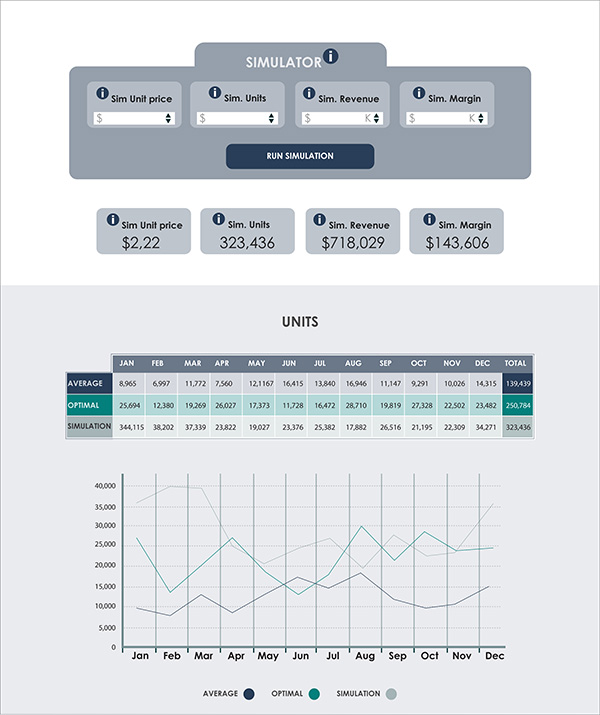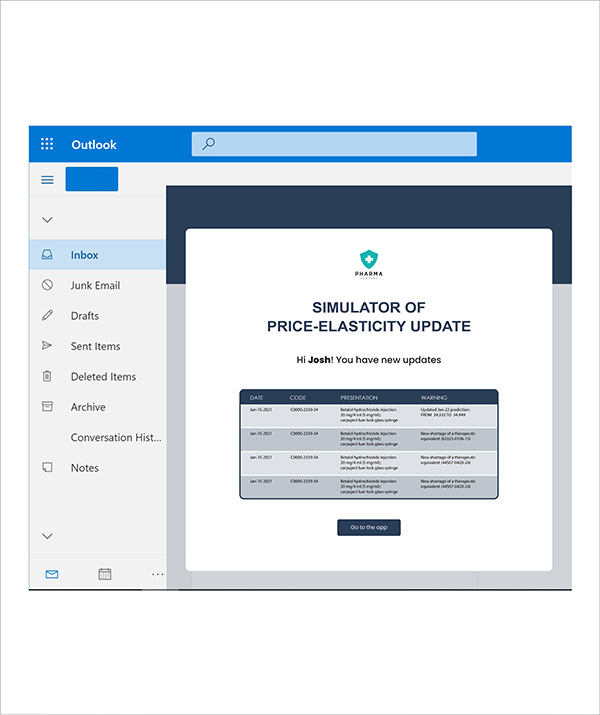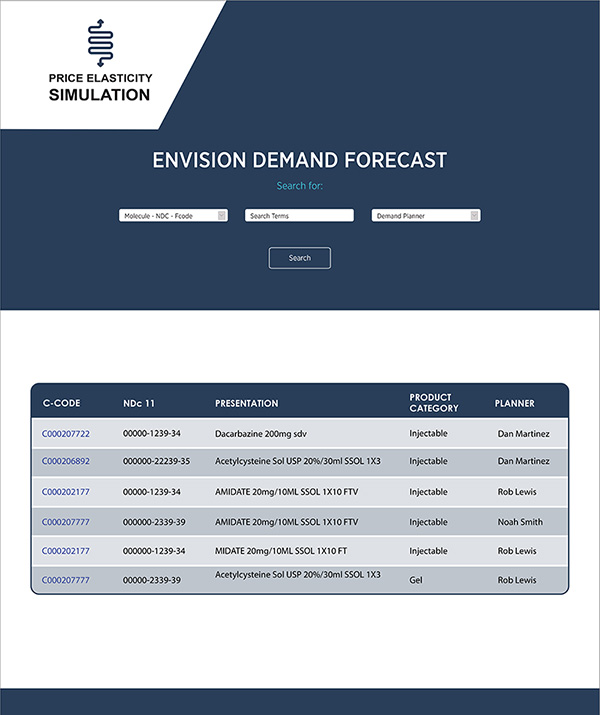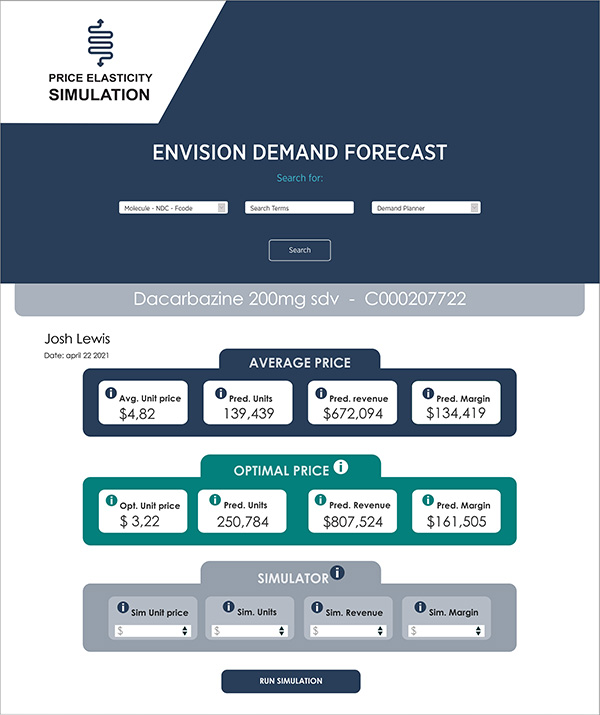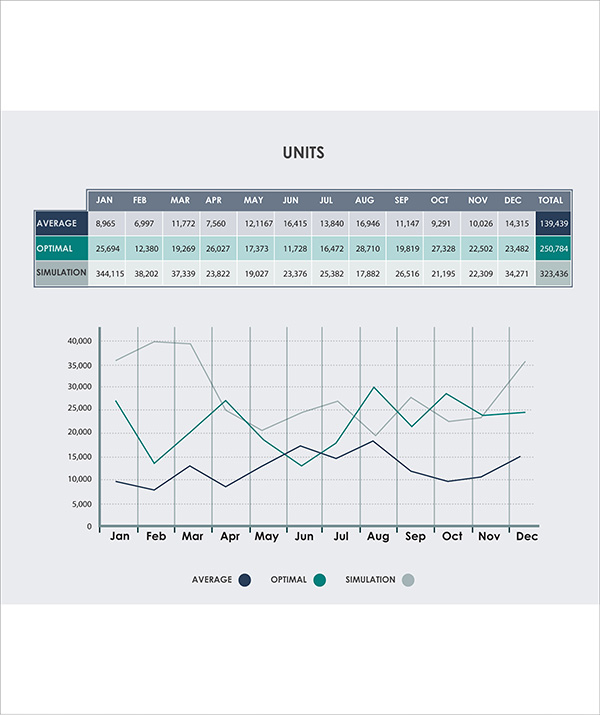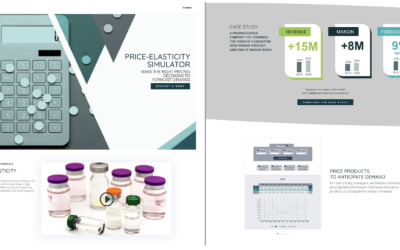PRICE-ELASTICITY
SIMULATOR
MAKE THE RIGHT PRICING
DECISIONS TO
FORECAST DEMAND
INTRODUCTION VIDEO : KONPLIK’S
PRICE -ELASTICITY SIMULATOR
In our daily work with the pharmaceutical industry, we find several instances in which drugs show a high level of price elasticity. When the price of medicines rise, the amount demanded falls. And when the price falls, the demand rises.
CASE STUDY
A PHARMACEUTICAL COMPANY THAT COMBINED THE POWER OF A SIMULATOR WITH DEMAND FORECAST ADDS $8M OF MARGIN YEARLY
The project in numbers. 2019 vs 2020
(with Konplik’s simulator of price-elasticity)
PRICE PRODUCTS
TO ANTICIPATE DEMAND
For best pricing, managers use Konpik’s simulator of price elasticity of demand that helps them price products to anticipate the margin increases.
Why does it add value?
1. Intense cross-price elasticity analysis
In the real world, the demand for a product is not only dependent on its own price, but also on the price of other “related” products. To set prices, pharmaceutical companies need to measure the sensitivity of competing medicines to their products through detailed cross-elasticity analysis.
The availability of substitute goods is probably the main factor determining the elasticity of demand for a pharmaceutical product. The more products available, the higher the elasticity, as consumers can easily switch from one good to another. If no substitutes are available, the demand will be inelastic.
For example, Adenosine-3mg/ml-vial has 7 products competing as therapeutic equivalents in the US market. At least two of them show high ratios of price-elasticity.
If, instead of Adenosine, we had a newly patented medicine with no therapeutic equivalent, a 20 percent rise in price might not affect demand at all.
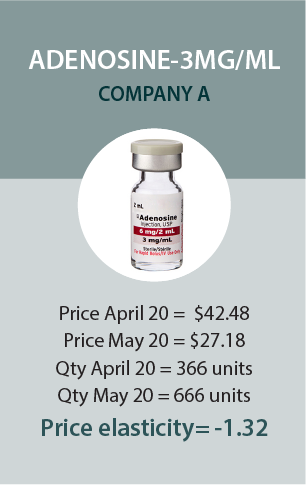
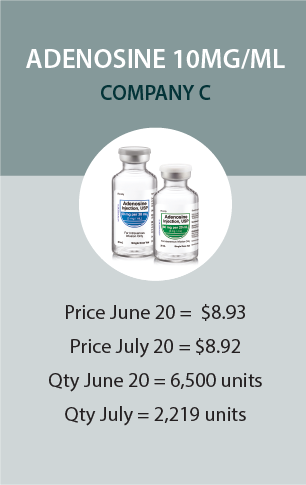
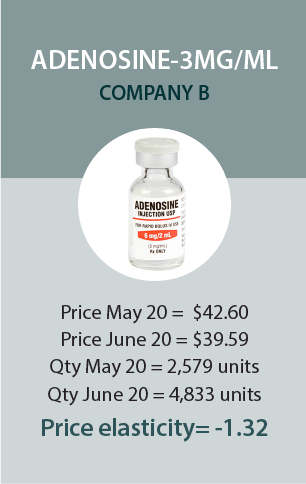
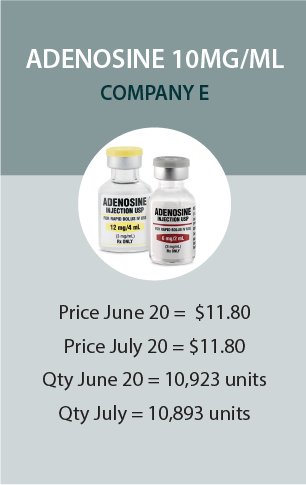
1. Intense cross-price elasticity analysis
In the real world, the demand for a product is not only dependent on its own price, but also on the price of other “related” products. To set prices, pharmaceutical companies need to measure the sensitivity of competing medicines to their products through detailed cross-elasticity analysis.
The availability of substitute goods is probably the main factor determining the elasticity of demand for a pharmaceutical product. The more products available, the higher the elasticity, as consumers can easily switch from one good to another. If no substitutes are available, the demand will be inelastic.
For example, Adenosine-3mg/ml-vial has 7 products competing as therapeutic equivalents in the US market. At least two of them show high ratios of price-elasticity.
If, instead of Adenosine, we had a newly patented medicine with no therapeutic equivalent, a 20 percent rise in price might not affect demand at all.





2. Evidence-based algorithms
Price elasticity of demand varies depending on the product that is being marketed. Some products have a very elastic demand, especially if they have many therapeutic equivalents available on the market. The key to our method is to constantly check and review models with respect to the results obtained. Our algorithms automatically pitch a number of models against each other in simulations that decide which one is the most accurate for each product’s price-simulation of demand.
3. Permanent updating
The system updates its predictions, every time new data arrives to the simulator, and warns users whenever it detects changes worth communicating, such as demand variations to the tune of +/- 20% at an SKU.

BLOG
PRICE-ELASTICITY
New microsite: Price Elasticity Simulator
For best pricing, managers use Konpik’s simulator of price elasticity of demand that helps them price products to anticipate the margin increases. SOLUTIONS MADE POSSIBLE BY KONPLIK’S PRICE-ELASTICITY SIMULATOR 1. Intense cross-price elasticity analysis In the real...
Cross Elasticity of Demand in Pharma
Cross elasticity of demand (XED) calculates the change in the quantity demanded of a good when the price for another good changes. In the previous post, we saw instances of high levels of elasticity in the pharmaceutical industry. In the real world, however, the...
Pharma: Calculating Price Elasticity
In the pharmaceutical industry, from a price and demand standpoint, all drugs are not created equal. In our daily practice with price elasticity, we find several instances in which drugs show a high level of demand variation whenever there is a change in price. Price...

